Expert Review
Kia Niro SUV (2019 - 2022) review
The Kia e-Niro is a five-door small electric SUV which will be competing with the likes of the Hyundai Kona electric, Nissan Leaf, Hyundai Ioniq and smaller Renault Zoe.

Words by: Auto Trader
Published on 19 December 2018 | 0 min read
The Auto Trader expert verdict:
4
Arguably, the two biggest buzzwords in motoring right now are 'SUV' and 'electric'. The Kia e-Niro is both, which means it’s probably on to a winner. The size and range of the e-Niro, along with its reasonable price, make it a very tempting package, that could sway some reluctant folk towards electric motoring. It does have a very credible rival in the Hyundai Kona electric, though.
Reasons to buy:
- Impressive range at 282 miles
- Decent amount of kit
- A good overall package
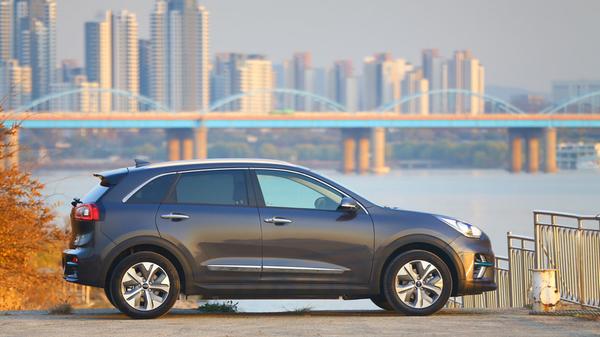
How good does it look?
The e-Niro is a small SUV, but its styling makes it look more like a raised-up estate car than a chunky off-roader. The electric version of the Niro has a few design features to differentiate it from the hybrid and plug-in hybrid variants, but it has been kept relatively conventional, and doesn’t look too futuristic. As it’s an electric car, the grille is closed off, and this is where the integrated charging port is. It also has redesigned air intakes, new LED daytime running lights, and a few blue trim highlights about the place. As well as redesigned front and rear bumpers, the e-Niro comes with new 17-inch alloy wheels.
Expert rating: 4/5
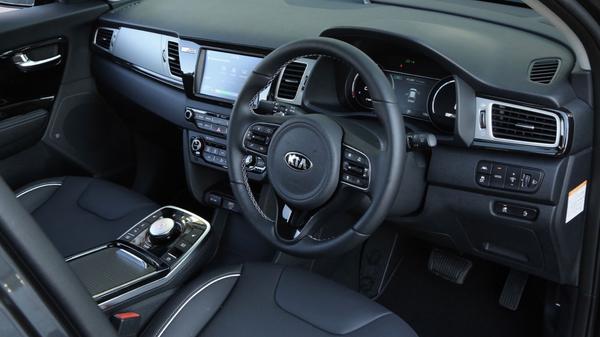
What's the interior like?
The e-Niro’s interior is pretty conventional, too. If you’ve been in any other new Kia, you’ll recognise the solidly built interior. You’ve got some nice soft-touch plastics on the dashboard and in all the important places, but there are some hard, grainy plastics further down in the cabin.
Like the exterior, there are a few bits exclusive to the e-Niro. The most obvious is that there’s no traditional ‘gear stick’, which has been replaced by a rotating dial drive selector. That same panel houses buttons for the electronic parking brake – compared with the foot-operated parking brake of the hybrid – heated seats, heated steering wheel, parking sensors and the auto-hold function.
Design wise, there are some bright blue trims, along with some subtle mood lighting and high-gloss black panels (which will quickly get covered in fingerprints) on the doors.
The 8.0-inch infotainment system is easy to use from the driver seat, with clear graphics and logical menus. It’s better than the system in the Hyundai Kona electric and Renault Zoe, and as easy to use as the Nissan Leaf’s system.
Expert rating: 4/5

How practical is it?
The Niro hybrid was already quite a roomy acr, and the e-Niro has even more space. There’s a larger storage area at the base of the centre console for starters. There’s a lot of movement in the electrically-adjustable driver’s seat and steering wheel, so it’s easy to find a good driving position, and visibility is pretty good, too. There’s also lots of room up front, and rear leg and headroom is comfortable for two adults, even taller ones. A third wouldn’t complain too much on a shortish journey, either.
Boot space is a reasonable 451 litres, which is a bit bigger than the hybrid Niro. It is still smaller than the Toyota Prius, though. The space is easy to use; there’s no load lip and there’s a flat floor, even with the 60/40 split rear seats folded down. There’s also a storage area under the floor so you can store all your charging bits and bobs.
For all your other odds and ends, there are cubbyholes dotted around the cabin, nets in the back of the rear seats and good size door pockets.
Expert rating: 4/5
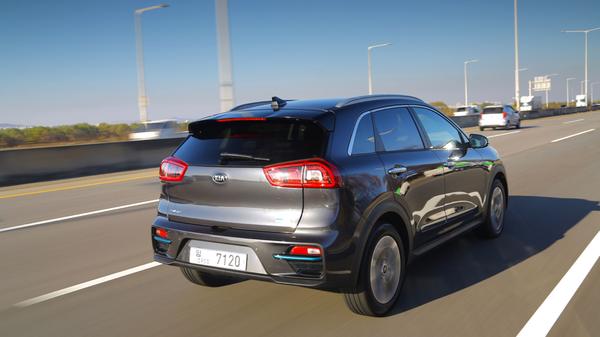
What's it like to drive?
The suspension is on the firm side and the car does feel a bit unsettled on less-than-perfect roads. It could also take the harshness out of bigger lumps and bumps more effectively, as some of these do crash into the cabin. While the e-Niro is quite a bit heavier than the hybrid versions (by several hundred kilograms) it doesn’t feel it. As the battery is under the floor, most of the weight is low down in the car, and that does mean less body roll in corners compared with the hybrid version. The steering is light, too, so manoeuvring around town isn’t an issue. It’s only available with front-wheel drive, though, with no option of four-wheel drive as suggested by the car’s SUV looks.
Expert rating: 3/5
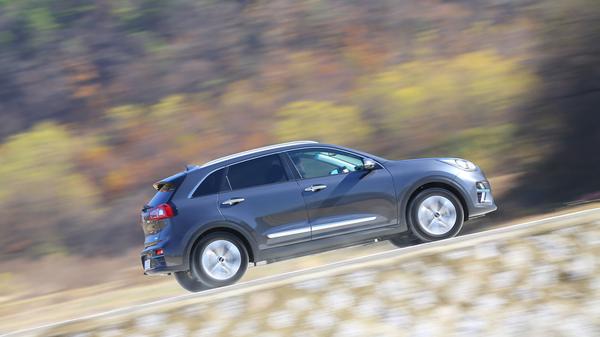
How powerful is it?
The e-Niro’s electric motor develops 204 horsepower and the 0-62mph run takes 7.5 seconds. As it’s an electric car, there aren’t any perceptible gear changes, so acceleration is very smooth and immediate. Pop it into ‘Sport’ mode and the acceleration is even more immediate. However, it’s not as quiet as you might expect because there’s quite a bit of road noise at motorway speeds.
You can change the amount of regenerative braking the e-Niro applies to top up the car’s range, with four different settings accessed through the paddles behind the steering wheel. At its highest setting, you can basically drive the car with one pedal. It takes a little getting used to, but it’s really easy to manage once you do.
The e-Niro’s high-capacity 64kWh lithium-ion battery pack gives the car an official range of more than 282 miles on the WLTP combined cycle – up to 383 on the WLTP city cycle – but bear in mind that there are lots of factors that affect the actual range of an EV. The ambient temperature has a big effect for example, as does running lots of ancillary functions like air-con and heated seats, your style of driving or where you’re driving.
Charging times will vary depending on the type of charger you use. If you’re using a fast 100kW charge point, it will take 54 minutes to go from 0-80% charge. With a standard 7.2kW home charger, it’ll take just short of ten hours. On a three-pin plug, you’re looking at 29 hours.
Expert rating: 4/5
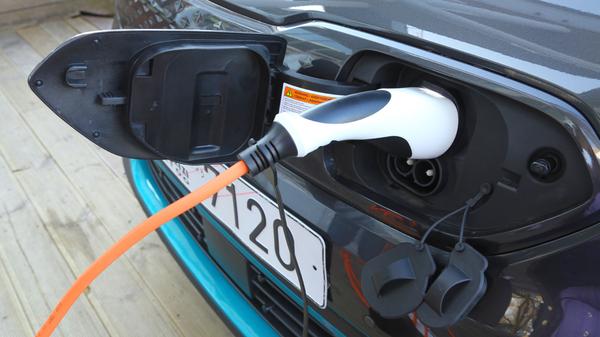
How much will it cost me?
If you’re considering an electric car, running costs are one of the big advantages, as the ‘fuel’ is considerably cheaper. We would recommend getting a home charger installed, rather than regularly relying on public chargers, as this will be more convenient and save you money. Although this doesn’t come for free when you buy the car, we’re told there will probably be incentives, but we don’t yet know exactly what these will be.
The e-Niro isn’t the cheapest electric car out there, but it’s certainly not the most expensive, and for the combination of range, size, practicality and standard equipment it delivers, it looks like good value. Compared with its closest rival, the Hyundai Kona electric, it’s a bit cheaper than the top-of-the-range model, which is the closest to the e-Niro in spec and range. It’s also very similar in price to the top-spec Nissan Leaf, and the Volkswagen e-Golf, and both those cars have considerably smaller ranges.
Expert rating: 4/5
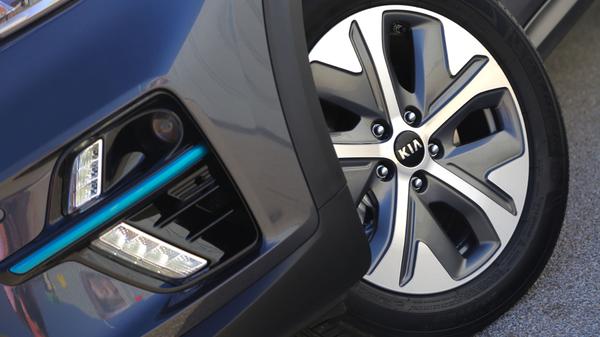
How reliable is it?
Like all Kias, the e-Niro comes with a superb seven-year/100,000-mile warranty, with an eight-year warranty on the battery.
It is also available with Kia’s Care-3 and Care-3 Plus servicing packages, which offer retail customers fixed-cost servicing for three or five years. All these packages are fully transferable if the car is sold.
Kia as a brand features exactly half way up (or down, depending on your level of optimism/pessimism) Warranty Direct’s Reliability Index, which takes into account all factors of a repair, the cost of the parts and the frequency of failures. That’s not bad, but there’s room for improvement.
Expert rating: 4/5

How safe is it?
The hybrid version of the Niro has been tested by Euro NCAP and it scored a reasonable four stars, if fitted with the optional autonomous emergency braking system. The e-Niro is fitted with this as standard equipment, along with lane keep assist, hill-start assist control, driver attention warning, emergency stop signalling, automatic headlight control and adaptive smart cruise control.
The e-Niro is fitted with seven airbags as standard, and there are two Isofix points in the outer back seats, which are relatively easy to access.
Expert rating: 4/5
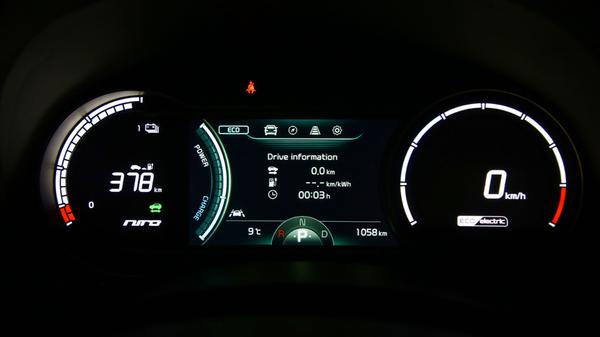
How much equipment do I get?
From launch, the e-Niro will be available in one ‘First Edition’ trim. It comes well-equipped, and makes your decision easier as you don’t have to ponder over several different trim levels. The First Edition trim gets you LED lights front and rear, roof rails for the rugged SUV vibe and 17-inch alloy wheels.
Inside, there’s an 8.0-inch touchscreen infotainment system with DAB, Bluetooth, sat-nav, Android Auto and Apple CarPlay, a JBL sound system with eight speakers, two USB ports and a wireless phone charger. On top of that, you get Kia Connected Services which give you up-to-date traffic information, speed camera info, local search and weather updates.
The infotainment system also allows you to manage various aspects of running the e-Niro, including your remaining charge and range, finding nearby charging points, finding out your lifetime CO2 reduction compared to driving a petrol car of a similar size, and setting the cabin temperature before you set off.
A 7.0-inch screen in the instrument cluster shows you driving and battery charge information on the move, while also assessing your driving style. You get a score of how much ‘economical’ driving you’ve done, and how much ‘dynamic’ driving.
You also get a heated steering wheel and heated seats, but do be aware these will reduce your range. Other helpful bits including rear parking sensors, a reversing camera, electric windows, an auto-dimming rear view mirror, rain-sensing windscreen wipers, heated and folding door mirrors, and keyless entry are all standard.
Expert rating: 5/5
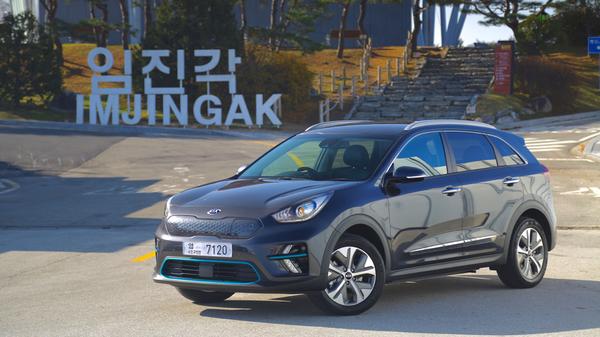
Why buy?
If you’re looking at an electric car, but have been put off by the short range, small size, or high price, the Kia e-Niro could solve those issues for you. With an official range of 282 miles, room for five adults, and a price which is around half that of the premium longer-range EVs, it is definitely worth a look, while you’re also checking out the Hyundai Kona and Hyundai Ioniq electric.
Expert rating: 4/5